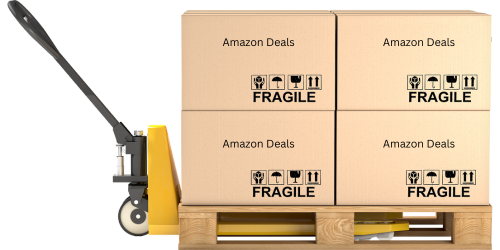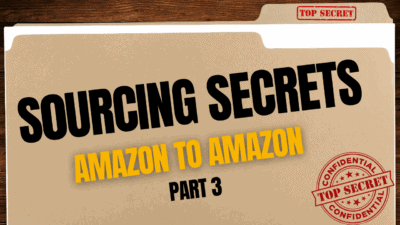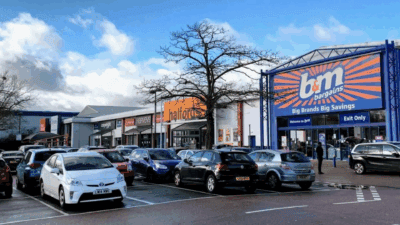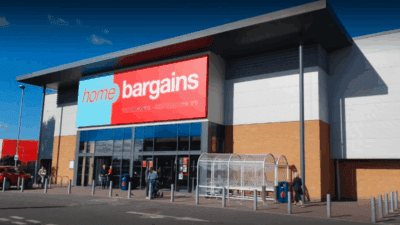Scaling an Amazon FBA business can be hard at times; it is one of the most common problems I see sellers struggle with. In this series, I’ll share my knowledge on scaling an Amazon business to £10,000 per month in profit and hopefully help you take your Amazon business to the next level. So let’s jump into it!
Step 1 – Change Your Mindset

In my experience, Amazon sellers tend to have one of two mindsets: either a mindset of scarcity or one of abundance.
Newer sellers generally believe that profitable deals are few and far between and have a mindset of scarcity.
More experienced sellers, especially those who have scaled to a profit of over £5,000 to £10,000 per month, have a different mindset—one of abundance.
It’s essential to try to shift your mindset to one of abundance. I can absolutely promise you there are more deals out there every day than you have money to buy.
The more time I spend sourcing, the more deals I find and realise just how many deals are available. I have a working capital of around £250k, and I still run out of money when it comes to buying stock. I know sellers who have working capital three to four times what I have, and they have the exact same problem.
So, change that mindset, realise the abundance of deals that are out there, and then you’re ready to move on to the next step of scaling your business.
Step 2 – Buy More!

Now this might seem like an obvious step, but honestly, it’s one thing that many Amazon sellers struggle with.
Amazon FBA is a straightforward business; it’s all about volume. If you want to make more money, you need to sell more items, and in order to sell more items, you need to buy more.
Now you have two options when it comes to buying more items. You can either:
Find more leads to buy
Or
Buy more of the leads you have
Now, the first option is “Find more leads to buy“. This will require you to level up your sourcing skills so that you can find more leads, or you can outsource the sourcing to a VA from somewhere like Outsource Central.
Sourcing is an essential skill when it comes to running an Amazon business, so I do recommend you spend time learning how to do this yourself before you pass the buck onto a VA. We have a bunch of articles on this website, all related to sourcing. You can find them here, so there should be no excuses that you cannot find leads.
The second option is to “Buy more of the leads you have“. Now I normally recommend to newer sellers to limit their orders to 5-10 units. This is because it keeps you out of trouble and stops you from making any huge mistakes. The downside to this is that you might be missing out on those golden opportunities.
I’m sure you can relate to this: oftentimes, Amazon sellers are either glad they only bought 10 items, or they’re kicking themselves for buying only 10.
Now, the only way to know when you’re ready to buy more than 10 units is when you start to notice that you’re making bad buys every now and then. This just comes with experience from analysing deals over and over again, and given time, you will grow your confidence when it comes to recognising a good deal vs a bad deal.
Now, the true secret to taking things to the absolute next level is actually to do both of these strategies. Focus on sourcing more often and then going deep on the really good leads that you find. This leads us to the second step in this first article of wisdom.
Step 3 – Improve Your Buying Criteria

Once you have cracked the first two steps, you will begin to run into a problem all experienced Amazon sellers run into – running out of capital.
This is where we implement step 3, improving your buying criteria. Now, there are several ways to improve your buying criteria, and we will go through these now.
Increase your ROI or margin requirements.
Look to pass up on deals that have lower criteria on ROI or margin (whichever you use). If you are frequently buying items that are 30% ROI, increase that to 35% and keep going until you have more money than deals, then dial it back again.
Look for faster-selling items.
Increase your criteria when it comes to how fast items sell. I always used to look for items that sold 50spm or more; however, I have now increased that to 100spm. This is because I want to get my money back faster, and also because I often buy in larger quantities.
Look for more stable products.
Look for price stability in the products that you buy. You want to find a product where the price remains stable over a 3 to 12-month period, so you’re not stuck with products where the price drops and you have to wait for it to recover to get your money back.
Realistically, we should not look at these sourcing improvements in isolation; instead, we should combine them with our sourcing requirements. Increase your ROI requirements slightly, look for those faster-selling items and finally look for those stable products.
Conclusion
If you decide to implement this three-step process, I can guarantee that you will see a significant improvement in your Amazon business. This business is not rocket science. However, it does take time and experience to learn how to run this business properly and scale it from when you’re a beginner to a more experienced seller.




